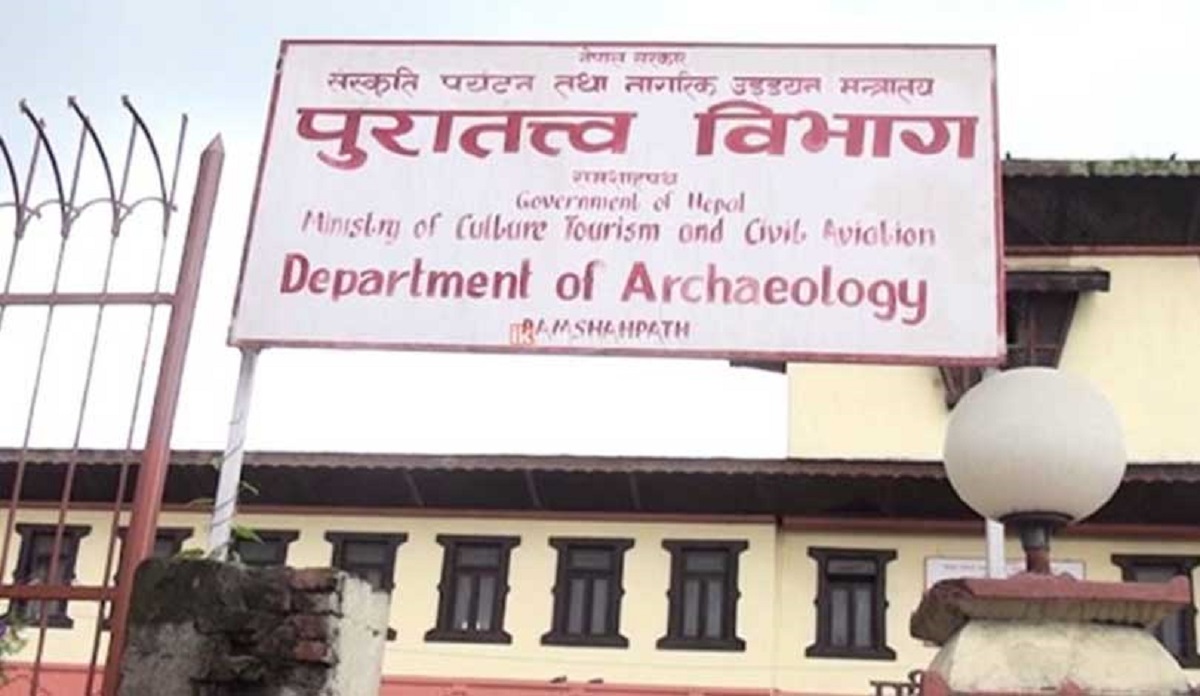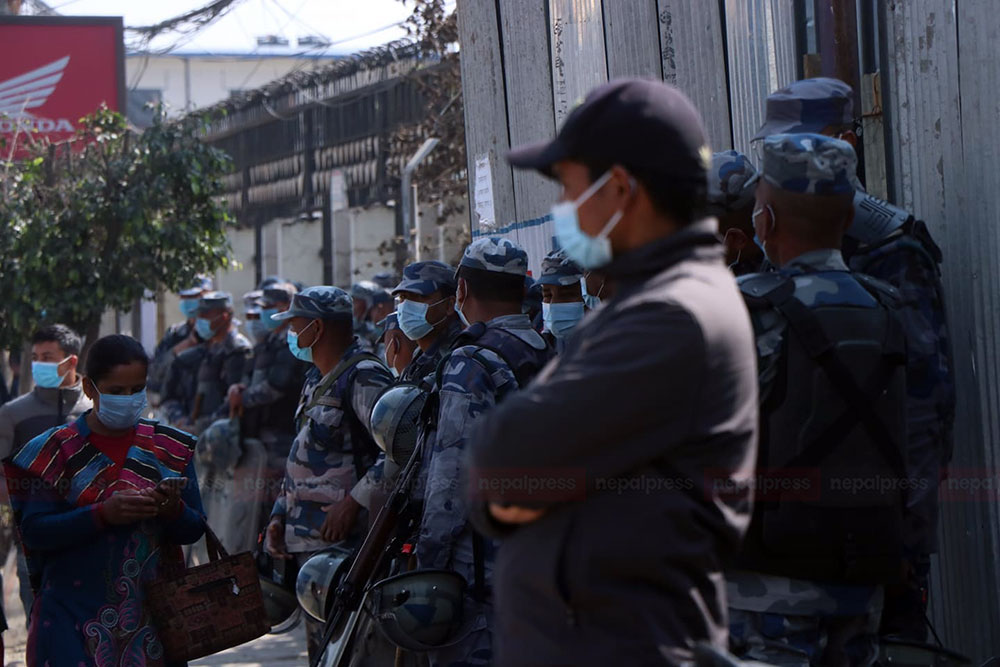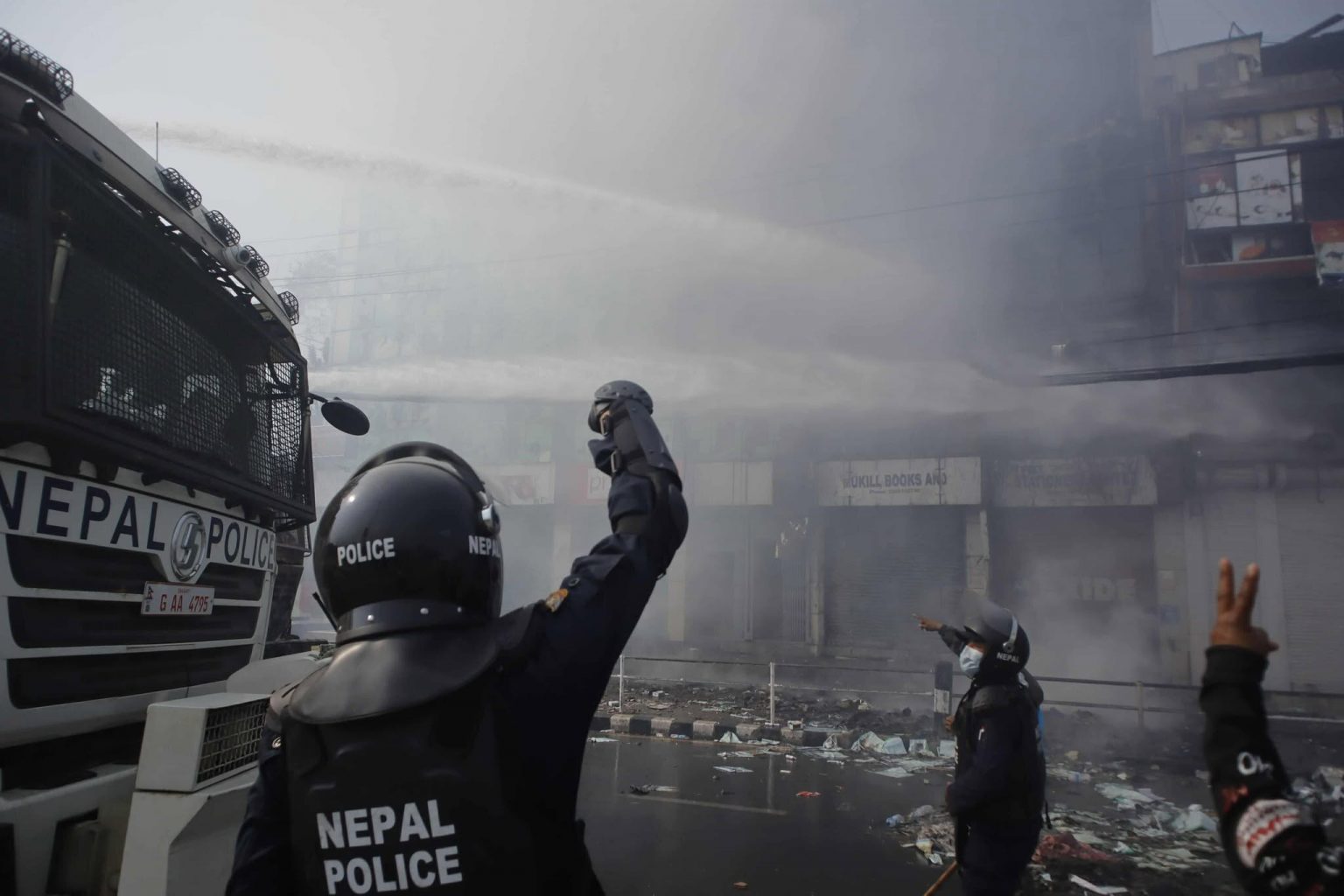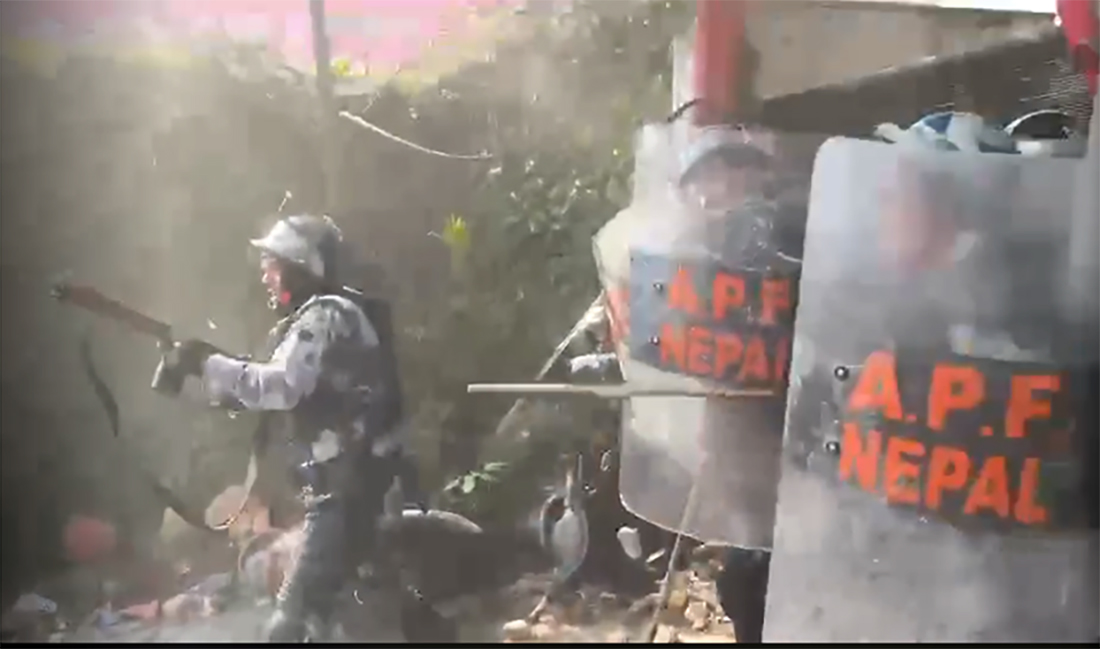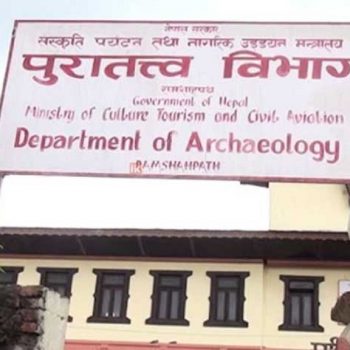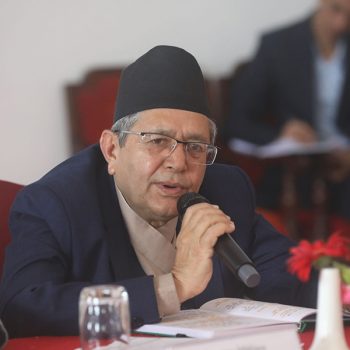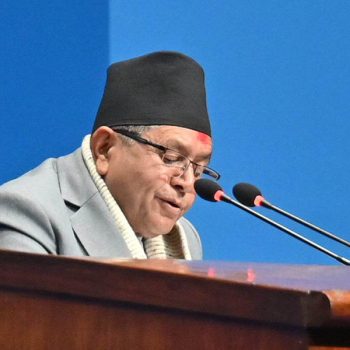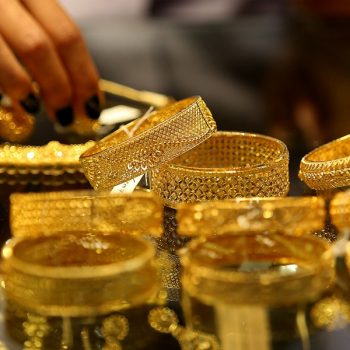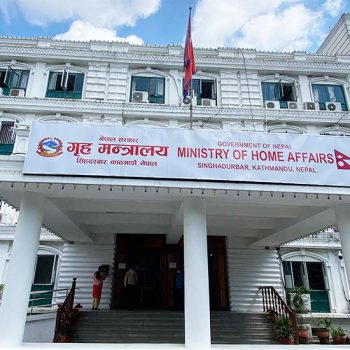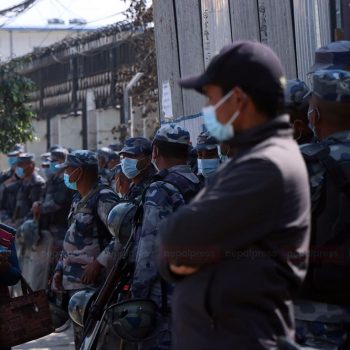‘East India Company still exists, It is owned by an Indian business man’
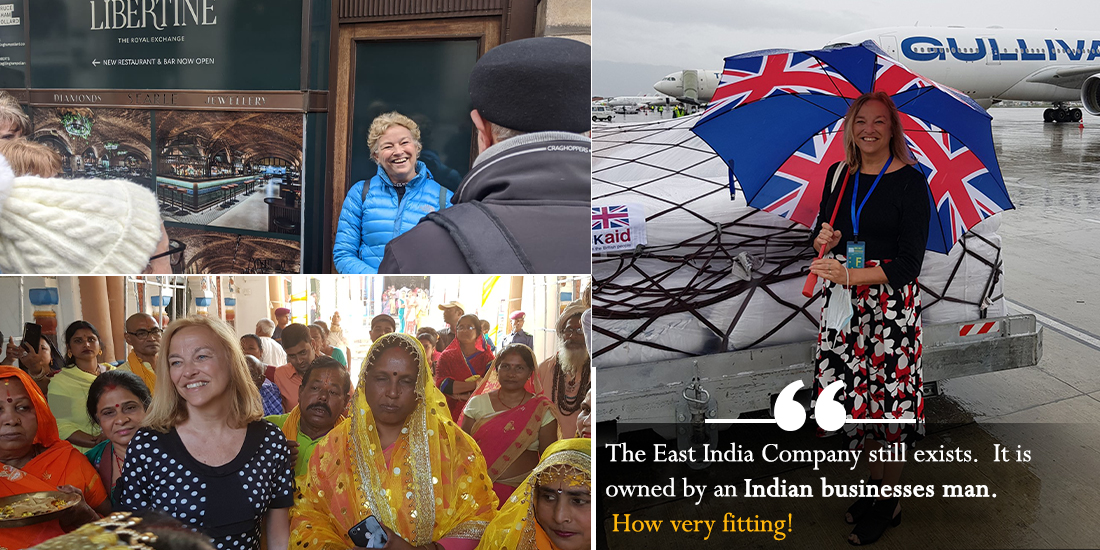
Lisa Honan has many hats. From a diplomatic figure to a tour guide for the ‘City of London’ specializing in East India Company, Lisa has a strong Nepal connection also. From 2019 to 2021, she was stationed in Nepal as Head of Development and, for a time as an acting ambassador of the UK in Nepal. With no familial connection in both diplomacy and tourism, Lisa started at the lowest civil service grade of Clerical Officer and spent her first two years filing papers about the UK’s development program in Nepal. From there she worked her way through the ranks of the civil service. She left the Foreign, Commonwealth, and Development Office (FCDO) in July 2021.
Having worked in Nepal, Kenya, Thailand, and Barbados, among others, Lisa has covered India, South Africa, and Angola from London. She switched to tourism in 2021/2022 after being selected as ‘City of London’ guide. Lisa has talked to Birat Anupam about her previous role as a diplomat and ongoing job as a City of London guide. As someone having specialized insights into East India Company, she has shared her views about East India Company-related issues with Nepal, mainly on Jung Bahadur Rana’s UK visit. Excerpts:
Your inclination towards tourism seems so strong that being a retired diplomat you are actively engaged in the guiding field which does not happen normally to other former diplomats. Why so?
The idea to get into the tourism sector as a guide happened after I’d left FCDO in 2021. I was serving there in the British Embassy in Nepal. I’d always loved history and, in particular, the history of London. I have strong links with London having been born, lived, and worked there….previous generations too. Like Kathmandu, London is a vibrant and complex city with lots of history. I applied to qualify for the City of London’s Green Badge guiding course to study the history of the City of London (which is the historic ‘Square Mile’ within the larger city where much of the financial district is also located). After studying over 2021/22, I was thrilled to be formally qualified as a City of London guide. I decided then, to ‘reimagine’ myself as a guide and highlight the history of the wonderful city of London.
You were the first woman Governor of St. Helena, a historic island where Napoleon was exiled. The island was owned by the then East India Company until 1854. Share your entry and experience over there as the Governor.
On the day I arrived on St Helena, it was at the end of a 10-day trip by ship to get there. The Royal Mail Ship (RMS) St Helena was the only way to get to the island. The ship had gone via Tristan da Cunha, one of the other islands in the territory. It was an amazing to finally see some land on the horizon. St Helena is a small island in the middle of the South Atlantic Ocean. In one direction 1,200 miles away is the continent of Africa: in the other direction 1,800 miles away is South America.
My experience in the role was fantastic. As Governor I was accountable to the U.K. Foreign Secretary for the governance of the island. I was the UK government’s representative but I also represented the Crown (at that time HM Queen Elizabeth II) and I also represented the interests of the island population to the U.K. Under the Constitution, the day-to-day decisions were made by politicians/councilors from the island (or Saints as they are called) which is how it should be. With 4,500 people living there, you might be forgiven for believing it was a quiet job. Nothing could be further from the truth. The issues the councilors and I dealt with were many and varied from getting the newly built airport going, to working out how to protect the unique flora and fauna, and from deciding where a new prison should be built, to ensuring Jonathan the tortoise in my front garden (who is the oldest land animal in the world) was happy. I never felt that being the first woman Governor in the island’s 500 years of history came into the equation. I was proud to be the first – and so far only – female Governor.
I find Jung Bahadur Rana an interesting man, leader, and ruler. Because his name translates to ‘brave in war’ I thought I would discover a life dominated by military campaigns. Nepali historians will undoubtedly know better than me, but my research also revealed a man who seemed politically adept and strategic.
You are ‘City of London qualified guide’. And, you have a specialization in the East India Company. When did it occur to you to interlink these two domains?
After I qualified as a guide, I had to decide on a theme or themes for my tours. St Helena was owned by the East India Company for about 200 years and I was always interested in how a private company could come to rule an island. I thought I would start researching the Company and the places it was associated with in London. I was surprised to find there weren’t many reminders remaining and the history of the Company was largely forgotten or invisible. For example, East India House which the Company occupied for 200 years was torn down when the British Crown nationalized the Company. In fact I discovered the Company was greatly disliked in Britain at the point it was wound up. I discovered that there had been too much corruption with too many people in the Company having got rich at the expense of countries around the world. This made me even more determined to get to the bottom of the story of the East India Company in the City of London. The more I uncovered, the more I felt it was a story that needed to be told. In particular, I was struck by how many history books, in the context of Empire, talk about ‘the British’ when in fact it was actually ‘the East India Company’ i.e. a private entity. In reality, the Company was the forerunner to the British Empire.
What are East India Company-related locations in London?
The East India Company-related locations in the City of London took a lot of research to identify. My walking tour goes from where the Company first started operating in a small alley way in the early 17th Century, to the premises it traded from for 200 years while also ruling over 300 million people across the world. We come across founders of the Company who, in 1600 were referred to as ‘merchant adventurers’. Today we might call them pirates! I show my clients Company warehouses and explain how the Company got involved in trading in tea, cloth, silks, gunpowder etc. from China, India and Indonesia. I also talk about the Company’s drug smuggling, its armies and the wars it fought. I often have to pinch myself that this was a multinational corporation. It wasn’t a government. It was driven by trade and one objective – making money for its shareholders. Just imagine if one of Nepal’s largest private companies had a monopoly for trading overseas; that it alone was the importer of goods into Nepal. Not only that, but in order to bring those goods into Nepal, it formed an army and, by force, claimed its trading partners’ territory as its own. Hard to appreciate today in the world of market economies, human rights, and competition!
My tours can be booked here. https://abnb.me/7mXY2WH7Fxb
Nepal’s first Rana PM Jung Bahadur Rana was in UK in 1850, during an influential era of the East India Company in South Asia. What, in your knowledge, are Jung Bahadur Rana-linked East India Company heritages in London and the cruise route from India to Europe?
I find Jung Bahadur Rana an interesting man, leader, and ruler. Because his name translates to ‘brave in war’ I thought I would discover a life dominated by military campaigns. Nepali historians will undoubtedly know better than me, but my research also revealed a man who seemed politically adept and strategic. He understood that it was trade and profits that drove the East India Company in India and he, I think, understood it was better to engage with the Company in order to maintain Nepal’s independence than come into conflict with it. He also had a strategy, it seems to me, to foster international diplomatic relations, especially with Britain. My sense is that he may have realized that the Company’s days were numbered and that it was the British government and Parliament that were key to any relations between Nepal and Britain going forward, hence his trip to the U.K. in 1850.
I find it interesting to see the rather circuitous route Jung Bahadur Rana took from Nepal to Britain. He left on 15 January 1850 calling at a number of places where the East India Company had trading posts e.g. Kolkata, Chennai, Sri Lanka. He then travelled to Suez, (and this was before the Suez Canal had opened) and from there by land to Cairo, Alexandria, onwards by ship to Malta, the straits of Gibraltar, arriving in Southampton on 25 May. What’s interesting is that the entourage didn’t take the usual East India Company sea route around the Cape which would have been quicker, but rather combined a sea and land route taking four months.
The visit to the U.K. took place from 25 May to 21 August 1850. It seems to have been a busy program visiting sights such as London Bridge, the Tower of London, London Zoo, St Paul’s etc. as well as sampling some of London’s culture and nightlife, such as the Epsom races, opera and the theatre. But it was crucially the dignitaries he met which seemed to pay dividends and lay the groundwork for relations with the British. He met Queen Victoria on no fewer than five occasions and she even on the spur of the moment invited him to the christening of her newest son, Prince Arthur. He met the Duke of Wellington three times, referring to him subsequently as a friend. He met members of the Cabinet, Sir Robert Peel, and other Lords, not forgetting several meetings with the Directors of the East India Company. He was provided with grand accommodation in Richmond and hosted several parties there too. The visit seems to have been a success and warm relations with Nepal were said to have started from it.
Between 2019 and 2021 you were stationed in Nepal as Head of Development and, for a time as acting ambassador of the UK in Nepal. What are your tourist magnets in Nepal?
I loved the hustle and bustle of Kathmandu where history and modernity exists side-by-side. Bhaktapur was one of my favorite areas, Patan too. Before lockdown in March 2020, I was lucky enough to visit Chitwan, Janakpur, and Karnali.
The East India Company, established in 1600 and dissolved in 1874, is mainly seen as the commercial venture to draw the colonial map of the UK in South Asia. Still, there are some who believe it was the venture to connect the commercial world of the East and the West. What exactly is the East India Company for you?
Initially the East India Company was part of Elizabeth 1’s international expansionist plans. Other European countries were already trading around the globe and England was increasingly at the mercy of the prices these traders wanted to charge. Elizabeth I wasn’t willing to pay higher and higher prices for products such as pepper, nutmeg and other spices. She wanted to similarly put England on the map and agreed to a request from a group of merchants to form the East India Company. Over the next two centuries the Company’s trading links expanded significantly. They fought battles to acquire more and more land and trade, all with a view to making money for their shareholders and for the employees themselves. In the early 19th century they set their sights on Nepal and its trading routes, winning a battle in 1816 which ceded some land to the East India Company.
What are the positive legacies of East India Company that are still breathing in different parts of the globe? Where does Nepal appear in that domain?
I think there remains a heated debate about the legacy of the Company and the extent to which it is positive or negative. In Britain, I can see for myself that Empire and colonialism are being questioned and better understood. This is a good thing. A few legacies in the U.K. spring to mind. There is certainly no denying that the impact of the Company’s trading changed what the British ate, drank and wore. Further, the business model which the Company operated is still recognizable today around the globe with its shareholders, Directors, Chairman, Annual General Meetings etc. And in Nepal, the continuing links with the U.K. government, including, for example, the recruitment of Gurkhas into the British Army originates from the links with the East India Company.
Anything you want to add which is not included in previous questions.
The East India Company still exists. It sells exclusive and exquisite teas, coffee (including St Helenian coffee) spices, jewelry, and coins from several gorgeous retail outlets in London. It is well worth a visit when in London. It is owned by an Indian businesses man. How very fitting!



